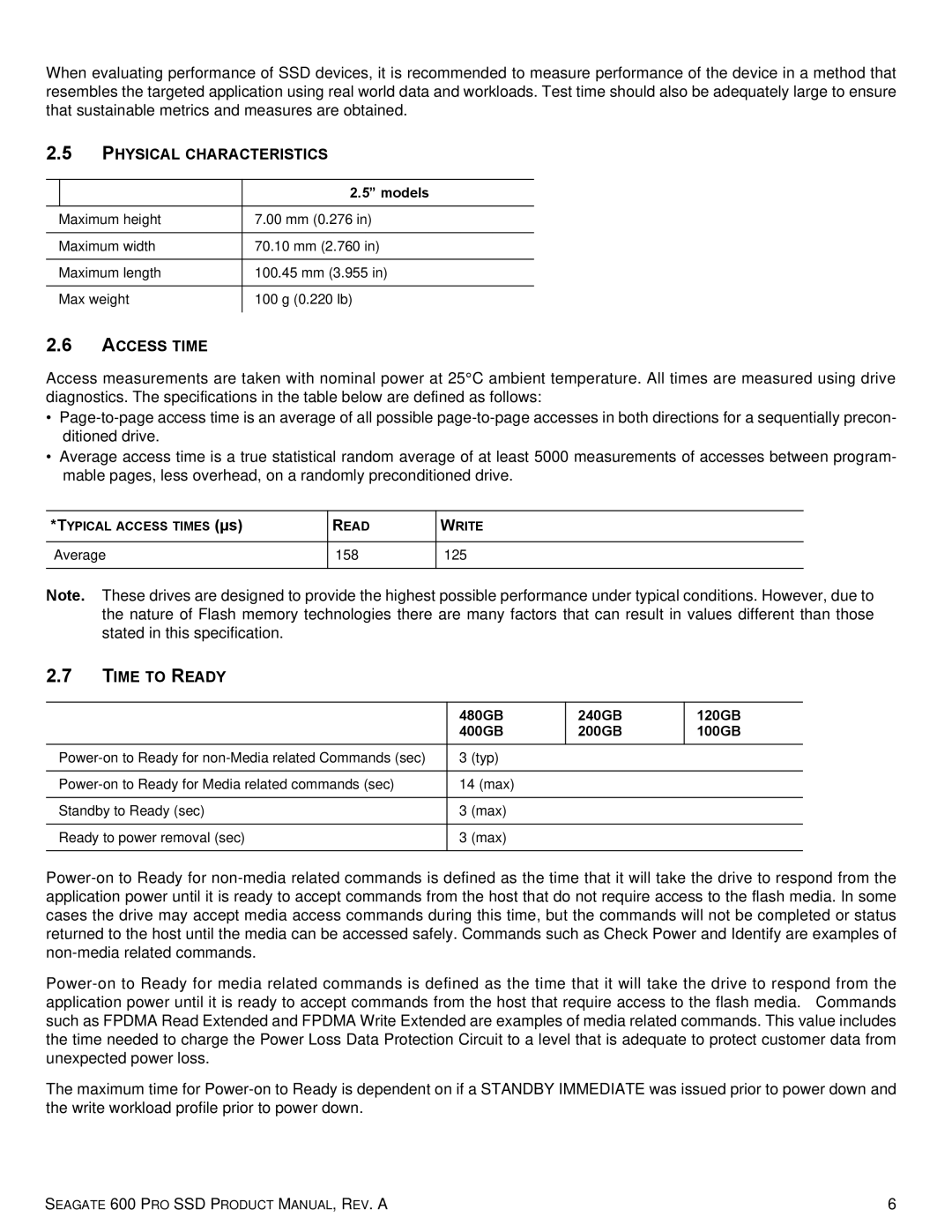ST480FP0021, ST120FP0021, ST100FP0021, ST400FP0001, ST200FP0021 specifications
Seagate has long been a leader in the storage solutions market, and its lineup of products, including the ST240FP0001, ST100FP0001, ST240FP0021, ST120FP0001, and ST400FP0021, exemplifies the company's commitment to quality, reliability, and advanced technology.The Seagate ST240FP0001 is engineered for high performance with a robust storage capacity of 240GB. Designed for both personal and professional applications, it leverages flash memory technology, ensuring rapid data access times and improved overall system performance. This model is particularly suited for use in compact devices, offering durability and energy efficiency, which are crucial for mobile applications.
In contrast, the Seagate ST100FP0001, with a 100GB capacity, presents an excellent option for users needing reliable storage in smaller devices. Its design focuses on efficiency and speed, making it an ideal choice for backups and data transfer. The drive employs advanced firmware algorithms to optimize performance, ensuring that data retrieval is swift and efficient.
The ST240FP0021 stands out with its larger storage capacity of 240GB, targeting users who require more space for applications, games, or multimedia content. This model utilizes Seagate's latest technology to maintain high read and write speeds, catering to gaming and high-performance computing environments. It also features enhanced error correction technology, ensuring data integrity so users can rely on their storage solutions.
The ST120FP0001 offers a balanced combination of performance and capacity, with 120GB of storage suited for everyday tasks such as document storage, photo libraries, and video edits. This model’s compact design allows it to fit in a wide range of devices, while its heat management technology helps in maintaining optimum operational temperatures, prolonging the lifespan of the drive.
Finally, the ST400FP0021 provides an impressive 400GB of capacity, making it a favored choice for users who require significant space for extensive data storage. It features advanced NAND flash technology, allowing for faster transfer rates and improved reliability. Its robust build quality ensures durability, making it suitable for both desktop and portable applications.
Overall, the Seagate ST240FP0001, ST100FP0001, ST240FP0021, ST120FP0001, and ST400FP0021 models showcase Seagate’s innovative engineering and commitment to providing users with dependable, efficient, and high-capacity storage solutions. Whether for personal or professional use, these drives cater to a wide spectrum of storage needs.

